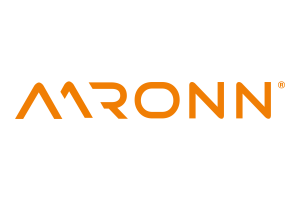Kudan awarded for its SLAM technology
»Eyes to the all machines - that's our goal«
Fortsetzung des Artikels von Teil 2
Strategies, positioning in the european market, goals
Artisense is a company which is part of the Kudan group and also a computer vision start-up. It emerged from the Technical University of Munich. What is Artisense's position in the company?
Artisense is our next growth engine! It has a packaged product named ArtiSLAM which is already integrated on reference hardware, that helps accelerate the R&D and integration process with customers. It also gives us access to cutting-edge research to make us more future-proof. Artisense was founded in 2016 as a spin-off from the Technical University of Munich (TUM). Prof. Dr. Daniel Cremers, from the computer vision lab in TUM, has been heavily involved in the development of Artisense’s technology. His computer vision lab is home to one of the most respected academic research teams in the world and is a leader in the field of SLAM research.
In your mid-to-long-term management strategy, you describe your vision as "Eyes to the all machines”. What exactly do you mean by this and how do you intend to turn this vision into reality?
“Eyes to the all machines” simply means that we build the core technology of spatial awareness for machines. We want to enable all machines, robots and moving devices to understand their location and surroundings through our SLAM technologies. Our aspiration is to become the ARM of the computer vision industry. Where ARM provides the processor architecture for many computing platforms, most end-users are unaware that the processors in their devices use the ARM architecture. We want to see as many machines and devices as possible utilizing our SLAM even though many end-users won’t realize it.
We are taking multiple paths toward this vision by working closely with processor and sensor OEMs so that our SLAM software can be provided together with these components and developers can access our SLAM more easily. Also, due to the on-going expansion of 5G networks, we see a huge potential in leveraging 5G for SLAM to provide “SLAM as a Service”. This would enable devices to be light-weight and lower cost, requiring only sensors and a wireless transceiver on the device to have full spatial awareness while SLAM is being performed in the cloud. We are already working with some of the major telecommunication players toward this end.
Kudan is a Japanese company by origin. How are you positioning yourself in the European, and especially the German, market?
Actually, Kudan has a unique history. Kudan was born when our Japanese Managing Director met our British CTO, and started their AR marketing business in Bristol, UK. The company has continued to evolve providing first an AR SDK and now SLAM APIs. All major engineering work is still being done in the UK, but more of our revenue comes from Japan than Europe at the moment. However, we have been increasing our focus outside of Japan and thanks to our R&D in the UK, and with the addition of Artisense in Munich, we are beginning to see exciting growth opportunities in Europe, especially in Germany. We are planning to fully leverage Artisense’s network and presence in Germany.
What can we expect next from Kudan?
Hopefully you will begin to see more and more products coming to market using our SLAM software! Some of our ongoing projects have plans to launch commercially this year or early next year. Also, we have active initiatives with our partners to scale-up access to our software by developers in the market. We are hoping to accelerate this momentum to achieve our vision together with Artisense. Please stay tuned!
- »Eyes to the all machines - that's our goal«
- Target applications and specific advantages
- Strategies, positioning in the european market, goals





